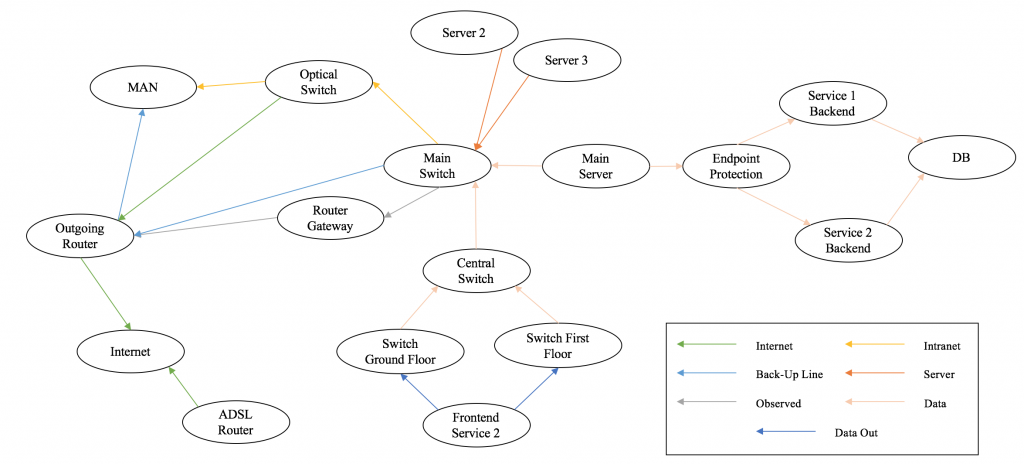Since the second iteration of the workshops in the piloting cities Larissa (GR) and Rome (IT) are coming closer, the preparations are in progress. As briefly explained in Mr. Wills blog post on the 8th of May, these involve the creation of a System Dependency Graph using GraphingWiki.
GraphingWiki is an extension of the open source MoinMoin wiki engine and was developed by the University of Oulu Secure Programming Group (OUSPG) in the context of the PROTOS-MATINE dependency analysis methodology. The core idea of GraphingWiki is that it allows to collect information from various sources about an environment to be analysed in a completely unstructured way, and form a structure by linking information that belongs contextually together. GraphingWiki allows to visualize those connections in a dependency graph, which helps analysts to find connections that may not be intuitive. Similar to rich pictures, this type of visual representation of complex information builds a common understanding of the domain for those involved in the analysis. It gives more structure to the analysis results in an effort to enhance accuracy and unlock tacit knowledge.
The Soft Systems Methodology was explained in detail in a prior blog post and was used to collect information from participants in the first iteration of the workshops. During these sessions rich pictures were developed, showing different parts of the system or various socio-technical situations of the municipality’s daily operations. The combination of these rich pictures gives a detailed overview of the system and its’ components. In CS-AWARE GraphingWiki is used to derive a system and dependency graph shown in the graph below by bringing together the information captured during the soft systems workshops. The graphing capabilities assist the analysts as well as the LPA representatives to visualize those analysis results, highlight hidden dependencies and help to iteratively refine possible inaccuracies in the analysis results or their interpretation.

The components of the municipality’s system are connected via different types of relations.
The System Dependency Graph presented in this blog post is considered work in progress and will build the basis for discussions in the upcoming Larissa workshop. Based on the rich pictures designed in the first iteration, participants will construct a conceptual model of the represented domain. This conceptual model will then be compared to the dependency graph developed by our analysts. This will ensure the completeness of the graph, which is a crucial part of all individual CS-AWARE implementations.
The Larissa workshop and the resulting dependency graph were the focus of this blog post for explanatory purposes.
Veronika Kupfersberger, Gregor Langner, Thomas Schaberreiter
University of Vienna

